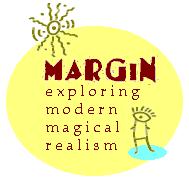

r e t r o s p e c t i v e
ARTURO USLAR-PIETRI

Time to give credit where credit's due?
IT'S HARD to imagine the possibility that Gabriel García Márquez might not actually be the legitimate Latin American Father of Magical Realism. Oh, the paradigm shift that would require! Certainly no one could have done such a brilliant job prior to the publication of Cien años de soledad (One Hundred Years of Solitude) in 1967? Or could they…?Well…
…There was Julio Cortázar's Rayuela (Hopscotch) in 1963, but many will argue that his book was more a modernist, Latin American riff on Surrealism that pure magical realism.…So perhaps it's best to say that Borges fertilized its roots, Carpentier gave it taxonomy, Cortázar grew its branches, and Gabriel García Márquez brought magical realism to full blossom.…Alejo Carpentier of Cuba preceded him, with what many credit as a kind of official manifesto for magical realism. In his book, El reino de este mundo (The Kingdom of this World) published in 1946, he first used the term of lo real maravilloso in the introduction.…
…And just before him, Jorge Luis Borges was busy writing fantastic stories in the basement of the library where he worked, stories which some scholars claim to be forerunners of magical realism.…
But wait—from whom came the seed?
Scholars suspect it was Arturo Uslar-Pietri of Venezuela. His 1931 novel, Las Lanzas Coloradas (The Red Lances), may very well be the first-ever official germination of Latin American magical realism, where elements of the style are said to have first appeared.
Interestingly, Uslar-Pietri, also well known as an essayist and critic, first applied the term magical realism in the 1960s in reference to another novel, Macunaíma, written by one of his contemporaries, Mário de Andrade. At around the same time, Miguel Ángel Asturias won the Nobel Prize for his novel, El señor Presidente (The President), and claimed the style of magical realism as his own.
To further confuse matters, that novel by de Andrade which Uslar-Pietri claimed to be magical realist? It was published in 1928, three years before Uslar-Pietri's own Las Lanzas Coloradas (The Red Lances).
The record seems to be clear on all this, however. Many of today's scholars, having the benefit of hindsight, consider de Andrade's novel a brilliant example of Brazilian modernismo, influenced by Surrealism and Freud, rather than an early kernel of magical realism. They also seem to agree that it was Uslar-Pietri who was the first in Latin American to use the narrative mode of magical realism in his work.
For fans of magical realism, all of this contention regarding the legitimacy of magical realism's Latin American father is surely nothing more than a frivolous entertainment (after all, if any literary movement should claim an illegitimate father, it should be magical realism!).
More to the point: Las Lanzas Coloradas (The Red Lances) conveys what has since become the archetypal magical realist narrative: one man mounts a rebellion against his oppressor, in a metaphor reflecting Venezuela’s war for independence. The author's depiction of the campaign of Simón Bolívar was a particularly risky effort for the times—Uslar-Pietri's story promoted the then-radical notion that miscegenation, or the mixing of races, was fundamentally positive for, unique to and representative of authentic Latin American culture.
Would today's English-speaking readers find this magical realist classic relevant? You bet. Las Lanzas Coloradas (The Red Lances) may have first appeared 75 years ago in Spanish, but it still reads just as accessibly now in its original translation by Harriet de Onís as it did when her excellent English rendition was first released in 1963. As for its anti-oppression message… sadly, that has not gone out of style anywhere in the world and remains as relevant a social issue as ever.
Which likely explains why Las Lanzas Coloradas (The Red Lances) has never been out of print. Considered a classic since the 1950s, the novel has sold more than two million copies in several languages. But how many North American fans of magical realism have actually read it? Not nearly as many as have read Gabriel García Márquez or Mario Vargas Llosa. And that's a shame. Uslar-Pietri received many awards during his career and lived through almost all of the 20th century, passing away in Caracas in 2001. It's time to give his book fresh new interpretation. We owe the Latin American Father of Magical Realism at least that much.

margin home | contents | links | reading list | marginalia | contributors | staff | guidelines | kudos | subscriptions | contact us
Layout, design & revisions ©Tamara Kaye
Sellman, Webmaster
Active home URL:
http://www.magical-realism.com
(also:
https://www.angelfire.com/wa2/margin/index.
html)
TERMS OF USE: This site contains copyrighted materials, including but not limited to text and graphics. You may not use, copy, publish, upload, download, post to a bulletin board, include in any weblog or otherwise transmit, distribute or modify any elements of this site in any way, except that you may download one copy of such contents on any single computer for your own personal, non-commercial use, provided you do not alter or remove any copyright, author attribution or other proprietary notices.